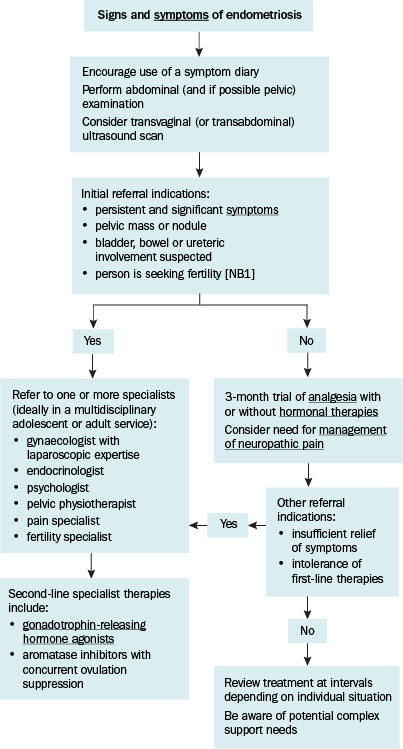Approach to treating endometriosis
The approach to treatment for endometriosis depends on the age of the patient, impact and severity of the symptoms and desire for fertility. See Approach to managing endometriosis.

Analgesia and hormonal treatment are first-line therapies for endometriosis; they can be used alone or in combination.
Hormonal treatment for endometriosis includes combined hormonal contraception, and progestogens; specialist treatment includes gonadotrophin-releasing hormone (GnRH) agonists, or aromatase inhibitors combined with ovulation suppression. Treatment aims to reduce pain and suppress ovarian function (which induces atrophy of hormonally active endometriotic tissue).
Avoid hormonal treatment for individuals with endometriosis who are trying to conceive, because it can impair conception in the short term; see Endometriosis-related infertility. Hormonal treatment does not impair fertility in the long term.
Surgical management of endometriosis is indicated for treatment of severe pain or infertility. It involves laparoscopic removal or destruction of endometriotic tissue, or hysterectomy.
Patient information is available from the Royal Australian and New Zealand College of Obstetricians and Gynaecologists website and the Jean Hailes website.
